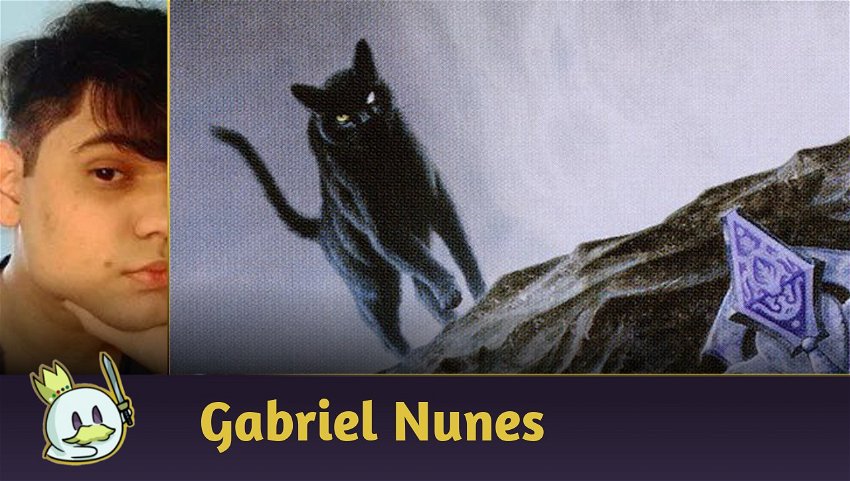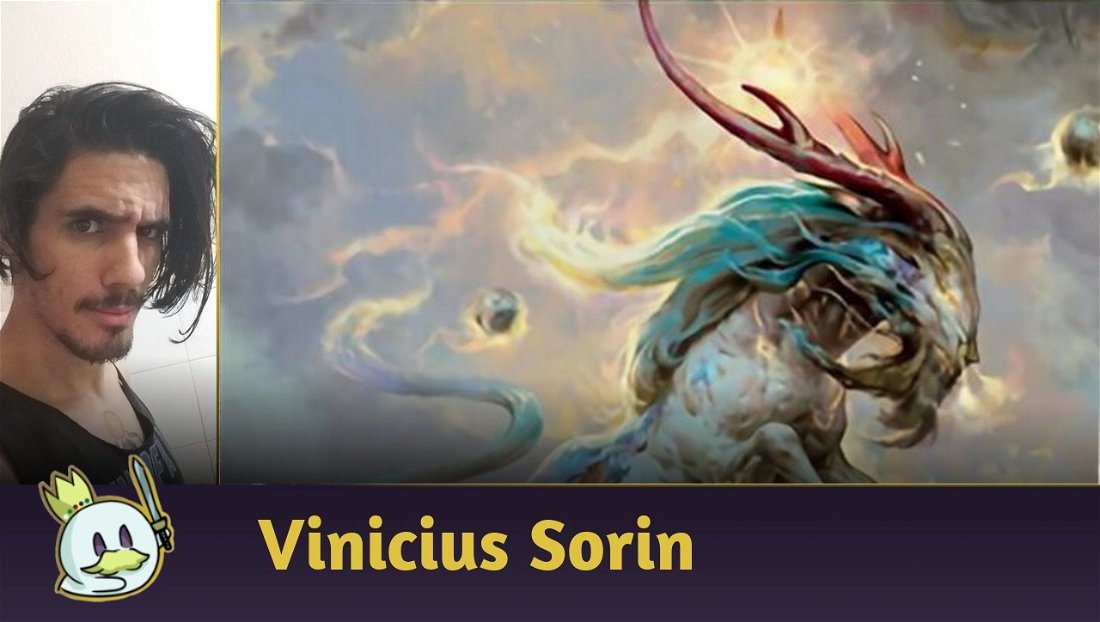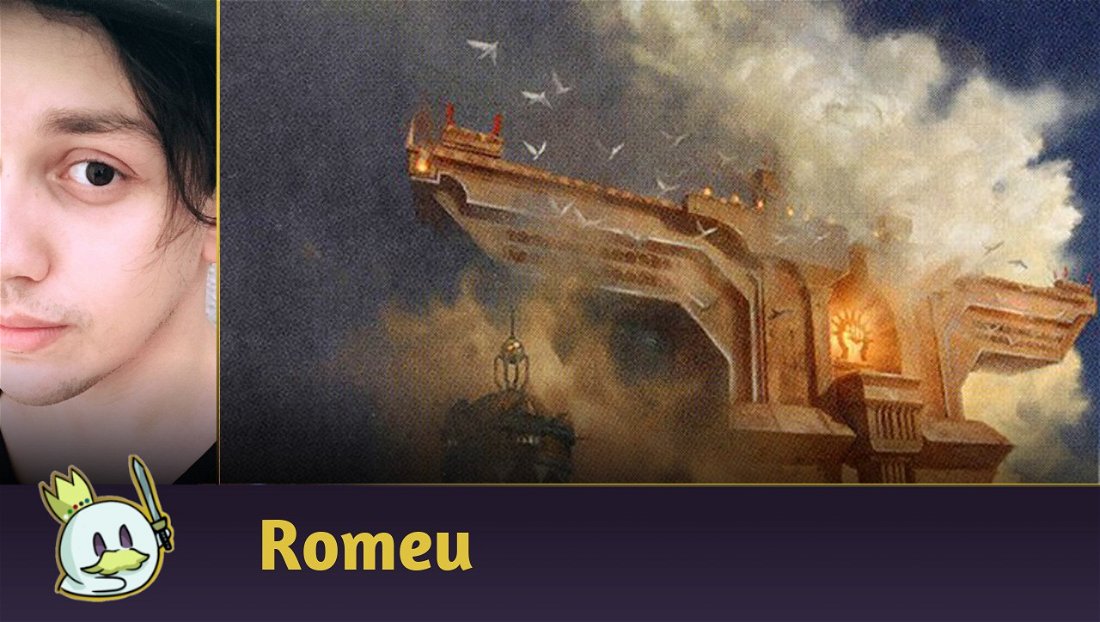Even after almost three years of Eldraine's release, the food mechanic has become very popular among formats, due to its efficient payoffs (since different from clues and treasures, the resource gained by the food token is not the biggest differential in most sometimes). We started with Oko, Thief of Crowns which used food and saw play in every competitive format, however, the simic planeswalker was more individually strong than a support for the mechanics.
In Modern, food gained more strength with Modern Horizons 2, which brought the powerful interaction between Asmoranomardicadaistinaculdacar and The Underworld Cookbook, including a variant of Jund Food with the cook was the theme of my first article on this platform!
Ad
But today, we're going to bring up a different approach to Jund Food, which refers to the classic "cat-oven deck" that continues to see play in formats like Pioneer and Historic. Let's discuss the list that Kogamo used to get an 8-1 and sixth place at the February 19 Challenge.
Decklist - Jund Food by Kogano
Key Interactions

The deck's main interaction is the "cat-oven" loop that Cauldron Familiar and Witch's Oven provide, draining 1 life per interaction in a completely "spoon killer" style. It turns out that the efficiency of this interaction is due to the value it provides when used on the proper occasion, especially when the cat manages to disable enemy attacks by blocking and being sacrificed before damage, which makes a decent clock for the opponent, while you open more advantage gradually.

And here we have the other end of our interactions, with a card that until then was practically a sleeper from Modern Horizons 2; Ravenous Squirrel offers a heavy clock and constant pressure for just one mana, thanks to its ability that synergizes with the cat-oven loop, quickly making the squirrel become a must-answer threat.
In addition, it has a draw ability that can save you at times, giving you another chance to dig out the necessary answer. That's what makes it a better option than Tarmogoyf for example, which on other occasions was the "easy clock" Jund Food could count on.
And to top it off, we have the biggest source of card advantage in the deck: Trail of Crumbs is here to make it possible to scale in value while the key deck interaction controls damage in the grind, thus making it more difficult for the opponent to be able to return to the game. Because our deck curve is so low, it is possible to create a sequence of paying the ability's cost and casting spells in the same turn, creating a series of multiple plays to overwhelm the opponent.
Value Engines

We're talking about a midrange, so cards that work very well independently are also welcome, and in the colors, it's possible to say that we have 3 of the most powerful cards regardless of the format currently.
Ragavan, Nimble Pilferer is a creature that adds a lot of value on its own (in addition to its treasures growing Ravenous Squirrel) and Wrenn and Six is the most versatile and cost-effective planeswalker in the game.
The plan with these cards is to generate individual value that the opponent needs to deal with quickly, and meanwhile punish them with the deck's synergy.

We also have Urza's Saga, which despite being a powerful card alone, has several interactions with the deck, since its main artifact, Witch's Oven, is perfectly tutorable by the land. Also, we are talking about a deck with Treasure and Food tokens, which are great for making the Constructs way bigger.
Ad
And of course, we have to mention the most discussed new land in the game. Boseiju, Who Endures has become a key piece of interaction-based decks to deal with a whole range of threats such as other Sagas, various Hammer Time pieces and even some problematic sideboard cards like Chalice of the Void, which is an artifact that difficult our gameplan.
The Lurrus Option
That Lurrus of the Dream-Den is a mighty card we all know. It turns out that in this deck line, the cat was not an automatic option for inclusion in the deck, so I think it's important to analyze what is gained and what is lost with the choice that Kogamo made.
By including Lurrus, we lost some significant interactions for a food deck. Asmoranomardicadaistinaculdacar and The Underworld Cookbook, for example, cost less than two mana and could enter the deck, but the third card that is essential for the interaction, Ovalchase Daredevil, ends up not entering the equation for costing four mana.
It is also not possible to include Mayhem Devil, which was a classic in Food builds in other formats and generates huge potential for damage and board control, being one of the biggest reasons for the inclusion of red in the deck at the time of Standard.
But even with all this, the choice to use the cat brings a significant strength to the deck: the curve.
Jund Food's curve is low even by the standards of a Lurrus deck, having a huge focus on one-mana spells, not to mention its key interaction doesn't use mana, so it's easy to fit plays between bringing Lurrus into hand without the feeling of "losing the turn", and after that, the companion becomes a great piece of advantage, returning destroyed ovens, or even dead beaters to finish the clock.
In the end, the decision of this list among other Food lists was to exchange powerful synergies, but that make some cards have no function by themselves (the Ovalchase Daredevil when you don't have a discard outlet, for example), for more contained interactions, but sure to work better independently, thus making the synergies between the cards only add power to its gameplay.
Jund Food in the Metagame
"But if I have Jund Sagavan, why would I use a deck with fewer direct interactions instead?"
Again, this question is something that comes to mind whenever we see a different deck build with DRC+Ragavan, and the answer ends up being similar to what I said when I mentioned the new Assault Loam.
Jund Food is a version of Sagavan that deals even better with grindy matchups, against Jund Sagavan itself, the interaction between cat-oven gives Food a lot of advantage, making part of the removals unusable and preventing damage connections from the opposing Ragavan.
But on the other side of the coin, to better deal with grindy matchups, the deck gives up maindeck discards and other pieces that could help against decks that don't care so much about value, like Crashing Footfalls, Living End and Hammer Time (but here, Boseiju and removals turn out to be of great help).
Ad
In short, the Jund Food variation is an alternative to improve your game against other disruptive decks, but slightly worsening your maindeck options against combos.
Suggestions and Alternatives
Of course, when we discuss a strategy that sees play since Standard, we always have a range of options, and I've obviously selected a few that, I think, are good enough for the format.

The Meathook Massacre is a good option to improve your clock with the cat-oven combo, in addition to serving as a good board control depending on the moment it is used, while also being a mana sink option for a deck that is so efficient in mana. I don't think it's the crucial card for the deck, but an occasional copy can yield several advantages.

It depends on the Metagame you're playing against, Fatal Push has an advantage in some matchups, as it doesn't care about the creature's toughness (against Hammer Time, dealing "only" 6 damage ends up being an issue) and it's also much easier to get Revolt than Delirium, especially in this deck.
I suggest making your choice considering your own Metagame analysis.
Conclusion
Jund Food in general is a great alternative for you who already play with Jund Sagavan to deal with more grindy environments, switching between both decks depending on the Metagame is a sensible choice, so you can always adapt between your options.
And that's all for today, see you next time!










— Comentários0
Seja o primeiro a comentar